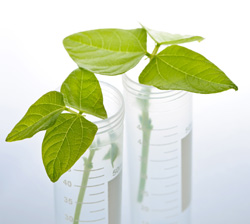Coexistence for GM and non-GM crops
Europe, in comparison to other world regions, grows only a few thousand hectares of genetically modified (GM) plants each year. Regulatory provisions in Europe over the last decade have reinforced prior evaluation of GM crops, established rules targeting traceability and labelling, and imposed post-marketing monitoring. For its part, the European Commission established the principle of coexistence of GM and non-GM crop production (the ability of farmers to choose among conventional, organic and GM production in compliance with legal obligations for particular standards), and introduced guidelines that define the context of this coexistence. When considering the prospect of introducing GM crop production in a sustainable manner, an important question is posed: What needs to be accounted for to make coexistence feasible? The 'Sustainable introduction of GMO's into European agriculture' (Sigmea) project attempted to address this by providing decision-makers with science-based information on the appropriate coexistence and traceability measures such a development requires. Members of the Sigmea team set out to gather existing and ongoing results relevant to gene flow and ecological impacts. They also sought to generate gene flow models at the landscape level so as to establish a science-based framework, methods and tools that could be used to assess the ecological and economic impacts of GM crop production. This approach also intended to facilitate the effective management of their development in different European farming systems. A series of regional case studies were carried out to design and assess coexistence scenarios and a number of significant goals were realised. The project organised the biggest collection in Europe of data on gene flow and persistence. An improved understanding of this issue can be used to inform practical strategies for coexistence in oilseed rape, maize and sugar beet. Researchers also produced a synthesis of available data on the environmental impacts of Bacillus thuringiensis (Bt) maize and herbicide-tolerant (HT) oilseed rape within European cropping systems. For research purposes, an operational, practical and dynamic generic gene flow modelling platform, LandFlow-Gene, was made available for research purposes; a landscape generator simulating agricultural landscapes was designed with the possibility of online access. Researchers analysed the feasibility of coexistence and its costs, and proposed scenarios for its management. Another project outcome was production of the first large-scale, empirically based estimation of the economic impact of a GM crop. This is especially important for EU farmers. Project results have much to offer as the topic of GM crop production becomes a pressing one for Europe.



